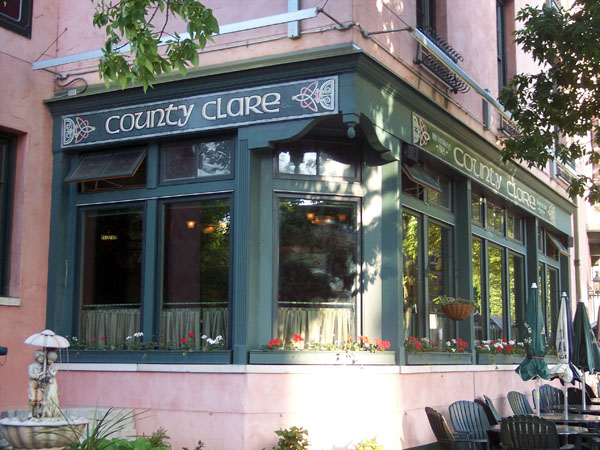Today is the day, loyal readers, that thousands of
bloggers unite their voices to discuss a common topic in order to spur a global conversation (yes today, check the date stamp). This year, that common subject is the environment.
We here at
Library Conspiracies take the topic of the environment extraordinarily seriously. For this reason, we jumped at the opportunity to become part of the
Blog Action Day Movement. When considering the many angles we might take for participating in this revolution, we unanimously decided on exposing the disheartening story of
Ostergard, Minnesota.

A small town in southern Minnesota,
Ostergard was once considered the sugar beet capital of the world, producing more gross tonnage of sugar beets than Kirghistan, Romania, Turkey, Iceland, Detroit, and Bulgaria combined.
That prestigious
capitalship has recently been cruelly and without sympathy stripped away from the small town after a series of devastating droughts.
This unprecedented drought has rendered the city's entire sugar beet crop unpalatable by all save for a small colony of garbage-gut, starving postmodern artists who settled in the city in 2005. Unfortunately, those "broke-ass, hippie-dippy artists" as one town elder refers to the colony's resident's, refuse to pay more than 9 cents per pound for the shriveled
Ostergard beets.
This would traditionally be the point in the post where we would digress into an in-depth discussion of global warming, shifting ocean currents, or even agricultural
overwatering, but this wouldn't be
Library Conspiracies if
Ostergard's water shortage were a simple case of climate change or irresponsible squandering.

Instead,
Ostergard's farms have become victims of groundwater-siphoning
Vaettirs.
Vaettirs (pictured right) are a Norse breed of pint-sized
otherfolk who make their homes and reside underground. Natives of Norway, the
Vaettirs settled in
Ostergard in 1952 when they stowed away in a Minnesota-bound Jarlsberg cheese crate in search of religious freedom. The
Vaettirs quickly built a thriving miniature metropolis beneath the fertile soil of the
Ostergard sugar beet farms. For over fifty years, the
Vaettirs lived in harmony with farmers, redirecting only enough water away from sugar beet roots to sustain their community and safeguard the plants from
overwatering.
Two years ago, however, the death of benevolent King Thor
Haralsson IVX left the
Vaettir community under the rule of King Sven
Olafson, or as his subjects refer to him, Olaf the Terrible. As you would expect with any garden-variety tyrant, Olaf swiftly instituted a set of self-serving social initiatives.
As his first act as King, Olaf ordered the construction of an ostentatious palace which includes a ridiculous number of
Greco-Roman baths and pools, the likes of which have not been seen since the time of
Nero. Olaf's obsession with enormously extravagant swimming and bathing facilities have led those who don't refer to him as Olaf the Terrible to refer to him as Little Nero.
In addition to the pools and baths, Olaf has also overseen the construction of an intricate fountain system, the likes of which have not been seen
since the time of
Louis XIV. It is said that the water needed to run the grandiose fountain system is so great that when they are activated, all bodily functions must be suspended because there is not enough water left in the
Vaerttir civic water system to even "let the yellow mellow" let alone "flush the brown down." Olaf's obsession with ornate fountain systems have led those who don't refer to him as Olaf the Terrible or Little Nero to refer to him as Lil' Louis.
The water needed to constantly run the self-serving aqua-pleasures of Olaf have become so great that legions of able-bodied
Vaettirs have been consigned to labor camps which force workers to constantly wring out the sugar beet roots into large aquifers in order to ensure a constant flow of freshwater to his pools, baths, and fountains. Large, complex aqueducts have also been built which redirect water from irrigation canals, watering basins, ponds, and bathtubs.
As you can imagine, this constant and brazen siphoning of groundwater away from the sugar beet roots has created a devastating drought despite record precipitation. Because of this groundwater drought, farmers are unable to grow anything other than tiny, withered, crusty sugar beets that taste like . . . tiny, withered, crusty sugar beets. Many farmers have already been forced to sell their farms and pursue careers as vikings in
Capital One commercials.
The few farmers remaining in
Ostergard are pinning their hopes on the results of a coup currently being planned by Olaf's second cousin, Hans the Procrastinator, but he has been talking about starting this coup for the last two years . . . so you can imagine.
All this
Librarian can say is . . . sugar beets . . . what the hell are sugar beets?
--Katherine O'Brien-Smith
 It didn't take long for Albert to fall under the spell of the ghostly courtesan. Genevieve's finely honed feminine wiles made short work of capturing Albert's heart. Knowing he may never have this opportunity for love once he returned to the sausage-fest up country, Albert quickly asked the courtesan for her hand in marriage. Genevieve, having never been allowed to marry as a courtesan, eagerly accepted.
It didn't take long for Albert to fall under the spell of the ghostly courtesan. Genevieve's finely honed feminine wiles made short work of capturing Albert's heart. Knowing he may never have this opportunity for love once he returned to the sausage-fest up country, Albert quickly asked the courtesan for her hand in marriage. Genevieve, having never been allowed to marry as a courtesan, eagerly accepted.



